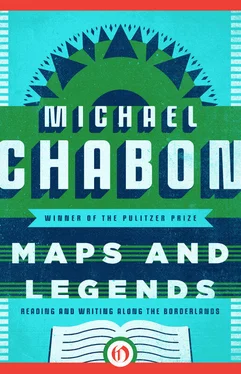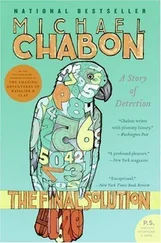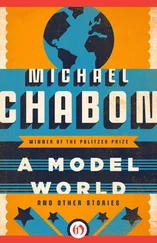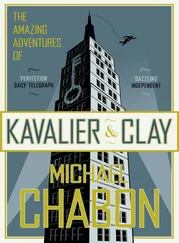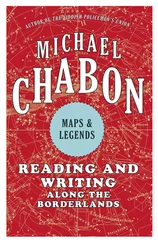But Katchor is far more than a simple archaeologist of outmoded technologies and abandoned pastimes. In fact he often plays a kind of involuted Borgesian game with the entire notion of nostalgia itself, proving that one can feel nostalgia not only for times before one’s own but, surprisingly, for things that never existed. Not content, or perhaps, in this age of debased nostalgia, too rigorous an artist to evoke merely the factual elements of a vanished past so easily appropriated by admen and Republican candidates, Katchor carefully devises a seemingly endess series of regrets, in the heart of Julius Knipl, for things not only gone or rapidly disappearing, such as paper straws and television aerials, but also wholly imaginary: the Vitaloper, the Directory of the Alimentary Canal, tapeworm sanctuaries, a once well-known brand of aerosol tranquilizer.
As, over the weeks, I joined Mr. Knipl in his peregrinations, I discovered that the strip’s wonderful evocation of an entirely plausible and heartbreaking if only partly veracious past is not the greatest of its pleasures or achievements. Ben Katchor is an extremely clever, skillful, and amusing storyteller.
With the exception of mute strips such as Henry and The Little King, the comic strip is and has always been a literary form that braids words and pictures inextricably into a story. In the so-called Golden Age of the comic strip, standards for both elements were often high; lately the pictures have dwindled to a bare series of thumbnail sketches, and while the notion of story has atrophied almost to nonexistence, most of the burden of humor or pathos now falls, for better or worse, on the words. But we have never — at least not since Herriman — had a writer like Katchor.
His polished, terse, and versatile prose, capable, in a single sentence strung expertly from a rhythmic frame of captions, of running from graceful elegy to police-blotter declarative to Catskill belly rumble, lays down the bare-bones elements, the newspaper-lead essentials of his story. As in all great strips, Katchor’s dialogue — the hybrid element unique to comics neither quite picture nor completely words — swelling perilously inside his crooked and deformed balloons, drives, embellishes, shanghais, and comments — generally ironically — on the story, his woebegone characters sometimes echoing the taciturn elegance of the captions, sometimes speaking in an entertaining mishmash of commercial travelers’ argot, Lower East Side expostulations, and the sprung accents of cheap melodrama.
None of this would mean anything, however, without Katchor’s artwork, running in perpetual counterpoint to and in tension with the captions and dialogue. Though his style in no way resembles that of either Jack Kirby or Will Eisner, Ben Katchor is along with them one of the three great depictors of New York City in the history of comics (Katchor’s city, nameless or whatever its name may be, is always plainly New York). It is a dark, at times almost submarine city, with antecedents in sources as divergent as the work of Hopper, De Chirico, and Ditko. Wide, deserted streets find themselves hemmed in on all sides by carefully not-quite-anonymous buildings. Late-night cafeterias extrude wan panels of light onto the sidewalks. Lonely news vendors stand beside dolmens of unsold papers.
Katchor’s style, like all the great styles, is addictive. His wobbly lines, woozy perspectives, and restless shifts in point of view; his intense exploitation of a narrow spectrum of ink washes running from soot to dirty rain; his use of detail at once lavish and superbly economical, painstaking, and apt; his lumbering, sad, hollow-eyed, jowly, blue-jawed men in their ill-fitting suits; his rare, mildly frightening women in their remarkable armor of trusses and lingerie — none of it is beautiful, or even, if I may be forgiven for saying so, masterly; the same could have been said about Herriman. In the funny papers a mastery of the vocabulary of comic drawing is more important than refinement of technique. Drawing skill matters only insofar as it helps the cartoonist tell his story.
The stories Katchor tells, mostly in eight or nine panels on a single page, occasionally spilling over onto two, three, or four pages (and wondrously, in the case of the longest and previously unpublished story in this collection, onto seventeen wild pages with an astonishing splash panel), fall, roughly, into seven categories. There are first of all the famous requiems for vanished places, sale items, novelties, and devices. There are episodes and accounts that serve to illuminate the ways and behaviors — from the Stasis Day Parade to the hazardous umbrella situation to the intricacies of Excursionist Drama — of the alternate Gotham in which Mr. Knipl makes his living. There are anecdotes and incidents taken from the lore of the local tradesmen, its hairstyle mappers, licensed expectorators, parked-car readers, and numerous cracked inventors. There are the odd, indirect, at times almost eventless stories so like dreams — the dreams beloved of readers of The Evening Combinator —that they linger and disturb. There are stories, inevitably but somehow incidentally, of Mr. Knipl himself, a lonely man in a city of lonely men, and stories of some of those other solitaires: Emmanuel Chirrup, Arthur Mammal, Carmine Delaps, Al Mooner.
In the end it isn’t nostalgia but loneliness of an impossible beauty and profundity that is the great theme of Knipl. Katchor’s city is a city of men who live alone in small apartments, tormented by memories, impracticable plans, stains on the ceiling. Small wonder, then, that they should so eagerly band together over and over again into the fantastic and prodigious array of clubs, brotherhoods, retirement communities, and secret societies, accounts of which make up the seventh category of Knipl story. “Fellowship,” as a loyal member of the Holey Pocket League tells Mr. Knipl, “is the only thing we crave.”
All seven of these typical narratives converge in “The Evening Combinator,” through whose seventeen pages Katchor begins, not without regret presumably, to effect an evacuation from the blasted country of the newspaper strip to the rumored paradise of something known, a hundred years after a bald boy in a yellow nightdress first appeared in the lonely, teeming streets of New York City, as the graphic story. Interesting things are happening there; whether they ever reach the level of high quality combined with mass readership of the great comic strips — the creation of immense shared hallucinations — remains to be seen. Perhaps in a broken, nocturnal, past-haunted city of solitary wanderers and lunatic leagues, like this one, such universal fantasies and the fellowship they provide are no longer possible. No matter how we crave them.
THOUGHTS ON THE DEATH OF WILL EISNER
BACK WHEN I WAS learning to love comic books, Will Eisner was God. Not God as in Eric Clapton — to be bowed down before, forehead to the ground, in a haze of dry ice and laser light. Gustave Flaubert once wrote in a letter that “An author in his book must be like God in the universe, present everywhere and visible nowhere.” In 1975 Will Eisner was God like that to me. Some of the artists and writers of the day whose work I liked most — Neal Adams, Jim Steranko, Steve Gerber, Steve Ditko — had been directly influenced by Eisner, but I didn’t know that. All I knew about Will Eisner was what I had read in Jules Feiffer’s The Great Comic Book Heroes. In that book, by one of Eisner’s protégés — a key work in the history of comics history — Feiffer passionately instructed the reader that Will Eisner was a genius and a pioneer, the one from whom all others stole and so forth. And I believed him. But I pretty-much had to take Jules Feiffer’s word for it. The eight-page Spirit story that Feiffer reprinted in his book—“The Jewel of Death”—remained for a long time the only full example of Eisner’s work that I had ever seen. Eisner was out of print, out of comics. As a publisher, a packager, a talent scout, an impresario, and as an artist and writer, Will Eisner had created the world of comics as I knew it. But until I saw some of the later Warren (or maybe it was the Kitchen Sink) reprints, I really had no idea who he was or what he had done.
Читать дальше
Конец ознакомительного отрывка
Купить книгу
